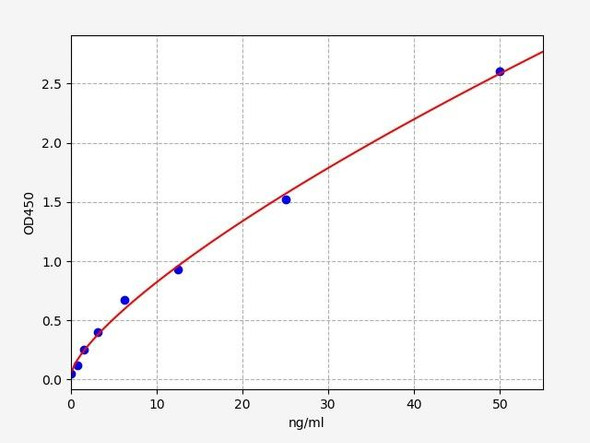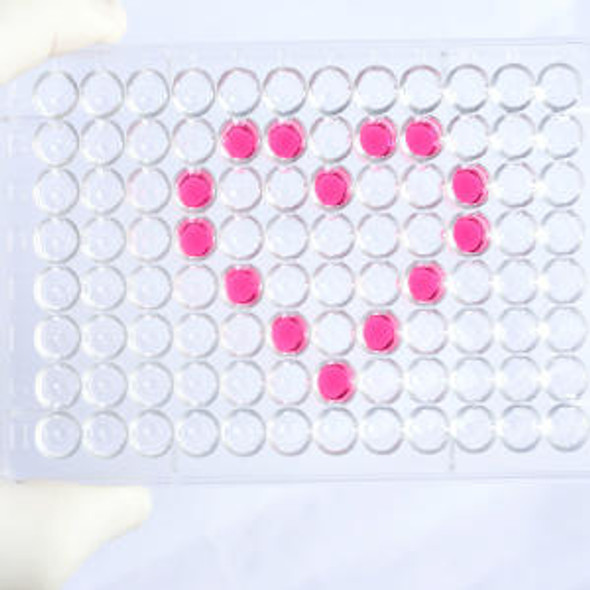Anti-APOL1 Antibody (CAB4412)
- SKU:
- CAB4412
- Product type:
- Antibody
- Antibody Type:
- Monoclonal Antibody
- Reactivity:
- Human
- Mouse
- Host Species:
- Rabbit
- Isotype:
- IgG
- Synonyms:
- APO-L
- APOL
- APOL-I
- FSGS4
Frequently bought together:
Description
| Product Name: | APOL1 Rabbit mAb |
| Product Code: | CAB4412 |
| Size: | 20uL, 50uL, 100uL |
| Synonyms: | APO-L, APOL, APOL-I, FSGS4 |
| Applications: | WB, IF |
| Reactivity: | Human, Mouse |
| Host Species: | Rabbit |
| Immunogen: | A synthesized peptide derived from human APOL1 |
| Applications: | WB, IF |
| Recommended Dilutions: | WB 1:500 - 1:2000 IF 1:50 - 1:200 |
| Reactivity: | Human, Mouse |
| Positive Samples: | HepG2, LO2, Human plasma |
| Immunogen: | A synthesized peptide derived from human APOL1 |
| Purification Method: | Affinity purification |
| Storage: | Store at -20°C. Avoid freeze / thaw cycles. Buffer: PBS with 0.02% sodium azide, 0.05% BSA, 50% glycerol, pH7.3. |
| Isotype: | IgG |
| Sequence: | Email for sequence |
| Gene ID: | 8542 |
| Uniprot: | O14791 |
| Calculated MW: | 44kDa |
| Observed MW: | 55KDa |
| UniProt Protein Function: | APOL1: May play a role in lipid exchange and transport throughout the body. May participate in reverse cholesterol transport from peripheral cells to the liver. Defects in APOL1 are the cause of focal segmental glomerulosclerosis type 4 (FSGS4). It is a renal pathology defined by the presence of segmental sclerosis in glomeruli and resulting in proteinuria, reduced glomerular filtration rate and edema. Renal insufficiency often progresses to end-stage renal disease, a highly morbid state requiring either dialysis therapy or kidney transplantation. Belongs to the apolipoprotein L family. 2 isoforms of the human protein are produced by alternative splicing. |
| UniProt Protein Details: | Protein type:Channel, chloride; Secreted; Secreted, signal peptide; Lipid-binding Chromosomal Location of Human Ortholog: 22q13.1 Cellular Component: extracellular region; extracellular space; intrinsic to membrane Molecular Function:chloride channel activity; lipid binding; protein binding Biological Process: cytolysis; innate immune response; killing of cells of another organism; receptor-mediated endocytosis Disease: Focal Segmental Glomerulosclerosis 4, Susceptibility To |
| NCBI Summary: | This gene encodes a secreted high density lipoprotein which binds to apolipoprotein A-I. Apolipoprotein A-I is a relatively abundant plasma protein and is the major apoprotein of HDL. It is involved in the formation of most cholesteryl esters in plasma and also promotes efflux of cholesterol from cells. This apolipoprotein L family member may play a role in lipid exchange and transport throughout the body, as well as in reverse cholesterol transport from peripheral cells to the liver. Several different transcript variants encoding different isoforms have been found for this gene. [provided by RefSeq, Nov 2008] |
| UniProt Code: | O14791 |
| NCBI GenInfo Identifier: | 206729940 |
| NCBI Gene ID: | 8542 |
| NCBI Accession: | O14791.5 |
| UniProt Secondary Accession: | O14791,O60804, Q5R3P7, Q5R3P8, Q96AB8, Q96PM4, Q9BQ03 A5PLQ4, B4DU12, E9PF24, |
| UniProt Related Accession: | O14791 |
| Molecular Weight: | 42,158 Da |
| NCBI Full Name: | Apolipoprotein L1 |
| NCBI Synonym Full Names: | apolipoprotein L1 |
| NCBI Official Symbol: | APOL1 |
| NCBI Official Synonym Symbols: | APOL; APO-L; FSGS4; APOL-I |
| NCBI Protein Information: | apolipoprotein L1 |
| UniProt Protein Name: | Apolipoprotein L1 |
| UniProt Synonym Protein Names: | Apolipoprotein L; Apo-L; ApoL; Apolipoprotein L-I; ApoL-I |
| Protein Family: | Apolipoprotein |
| UniProt Gene Name: | APOL1 |
| UniProt Entry Name: | APOL1_HUMAN |






